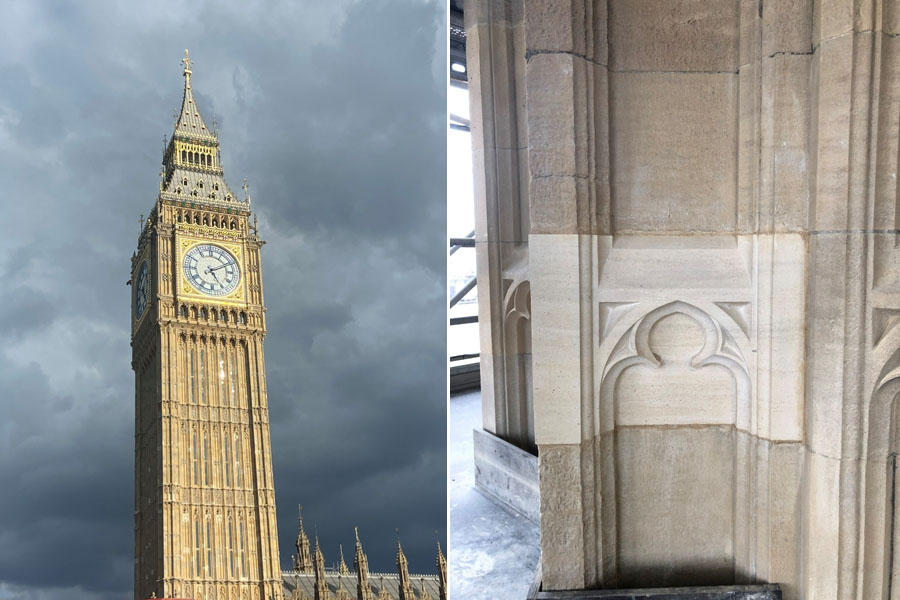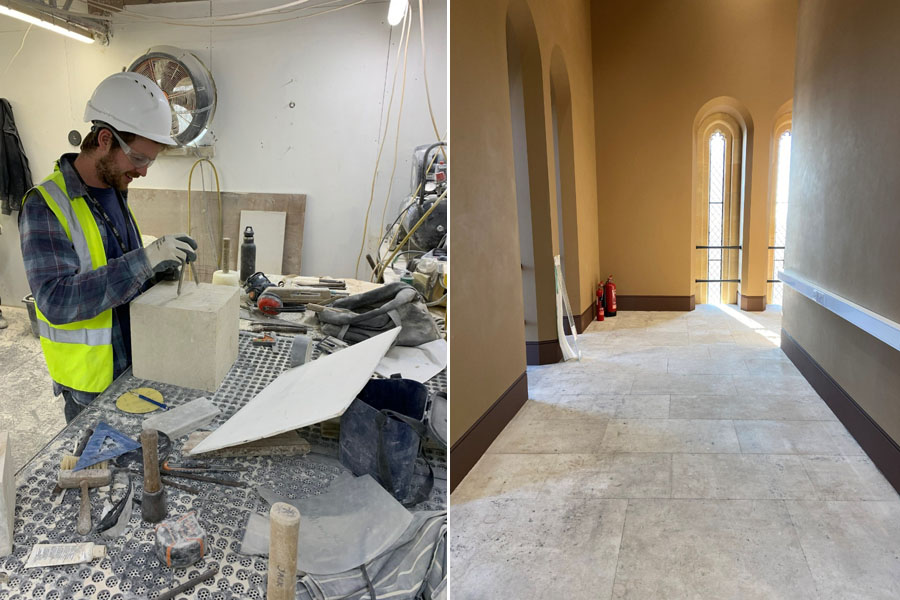DBR (London) Ltd provides conservation services across the entire interior of The Elizabeth Tower, the Palace of Westminster
Work on the restoration of The Elizabeth Tower, the world-renowned London landmark and home to the iconic ‘Big Ben’, concluded in October 2022. As the scaffolding continues to come down, the public are able to see the incredible work undertaken to return the facades of this historic monument to its former glory.

Less visually obvious but of equal importance was the significant amount of work done to the interiors of the 1867 monument. This showed that, as with any historic building, there’s more work involved than initially meets the eye.
DBR (London) Ltd, one of the UK’s leading conservation contractors, was not only instrumental in the restoration of the exterior stonework, but also carried out extensive restoration and adaptation of the interiors. This comprised of two main packages, which included: plasterwork, fire door upgrading and joinery conservation, as well as internal stone restoration.
Lighting the Way
Commencing on-site in January 2017, one of the most ambitious tasks in the project was the restoration and repair of the Ayrton Light, the iconic lantern atop The Elizabeth Tower, lit when either House of Commons or House of Lords is sitting after dark. Here, the team replaced the old copper mesh screens between the light’s structural stone columns with a new stainless steel mesh, increasing resistance without compromising integrity.
Moving to The Belfry, home of Big Ben, DBR removed the old stone floor and replaced it with a new limecrete subfloor followed by a proprietary waterproof system and topped with beautiful new Hopton Wood stone slabs to match the original floor, laid by DBR’s master stonemasons.
This was further complemented with a complete replacement of the entire slate covering of The Belfry’s newly designed entrance in new Welsh slate and the implementation of a new weatherproofing system to the surrounding parapets.
Linking-Up
Large scale re-plastering and decorating works had to be undertaken to make the internal rooms of The Elizabeth Tower fit for modern day purposes.
In the Link Room, which connects the Belfry to the Clock’s mechanism, the DBR team had to carefully strip all the lead paint from the walls and the space’s structural steel beams, to bring the building up to modern-day health and safety standards. Here, they also replaced a large number of timber boards, with conservation joiners strengthening two of the main oak floor beams with flitch plates.
The existing lead paint also had to be stripped from the Mech Room (which houses the clock’s mechanism), and the Dial Room, removing the hazardous substance from all walls and ceilings. This was followed by the removal of defective polished lime plaster from walls before re-plastering.
In the Mech Room, this activity was combined with the replacement of the whole of the ceiling’s older timber panels with new ones. In the Dial Room, its expansive 58m2 clock-backing walls required an extra-thick application of plaster to achieve a 3-inch depth.
In the Mess Room, once again, the lead paint and render were removed from walls and ceilings before re-rendering and fully-replacing the ceiling’s lath and plaster.
The internal staircases were also addressed, with lead paint removed from the walls and steps, while every step was cleaned from top to bottom. Where required, DBR’s stonemasons replaced stones in the steps as well as the internal stone window frames.

Last but not Least
The Tower’s C Rooms constituted some of the most extensive and far-reaching work for DBR. Aside from the essential removal of the lead paint, numerous patch repairs were also required on the walls as well as cutting pockets into the ceilings to allow for service-installation before repairing with lime plaster. In addition, DBR’s stonemasons replaced all damaged Hopton Wood slabs.
The team’s fire safety specialists were also put to the test, having to sensitively fit ten new fire doors into the Tower’s new lift shaft. This phase of the work also required the lead paint to be stripped from the doors and repainted to bring them up to current fire door regulations.
Commenting on the work, Kevin James, Senior Site Manager, who oversaw the work said, “The Elizabeth Tower was a gargantuan project, perfectly in proportion with its massive scale. Whilst the work undertaken by our stonemasons on the exterior is incredible, so is the accomplishments of our craftspeople who worked across the interior.”
He continues, “We had to work on an incredibly tight schedule, in a unique set of circumstances and in some distinctly unusually-proportioned rooms. Not only that, but the team had to deal with a number of hazards posed by the presence of copious amounts of lead paint needing to be safely stripped and removed in an environmentally cautious way. However, with exemplary skill and aplomb, they were able to rise above this challenge, and others, to achieve excellent results, meaning the project was completed to the highest standards, ensuring this wonderful iconic building remains a future standing and usable legacy.”
The national landmark is expected to be open to the public in Spring 2023, where visitors will have the opportunity to see DBR’s exceptional craftsmanship up close.
To find out more about DBR and its work on The Elizabeth Tower, click here.









